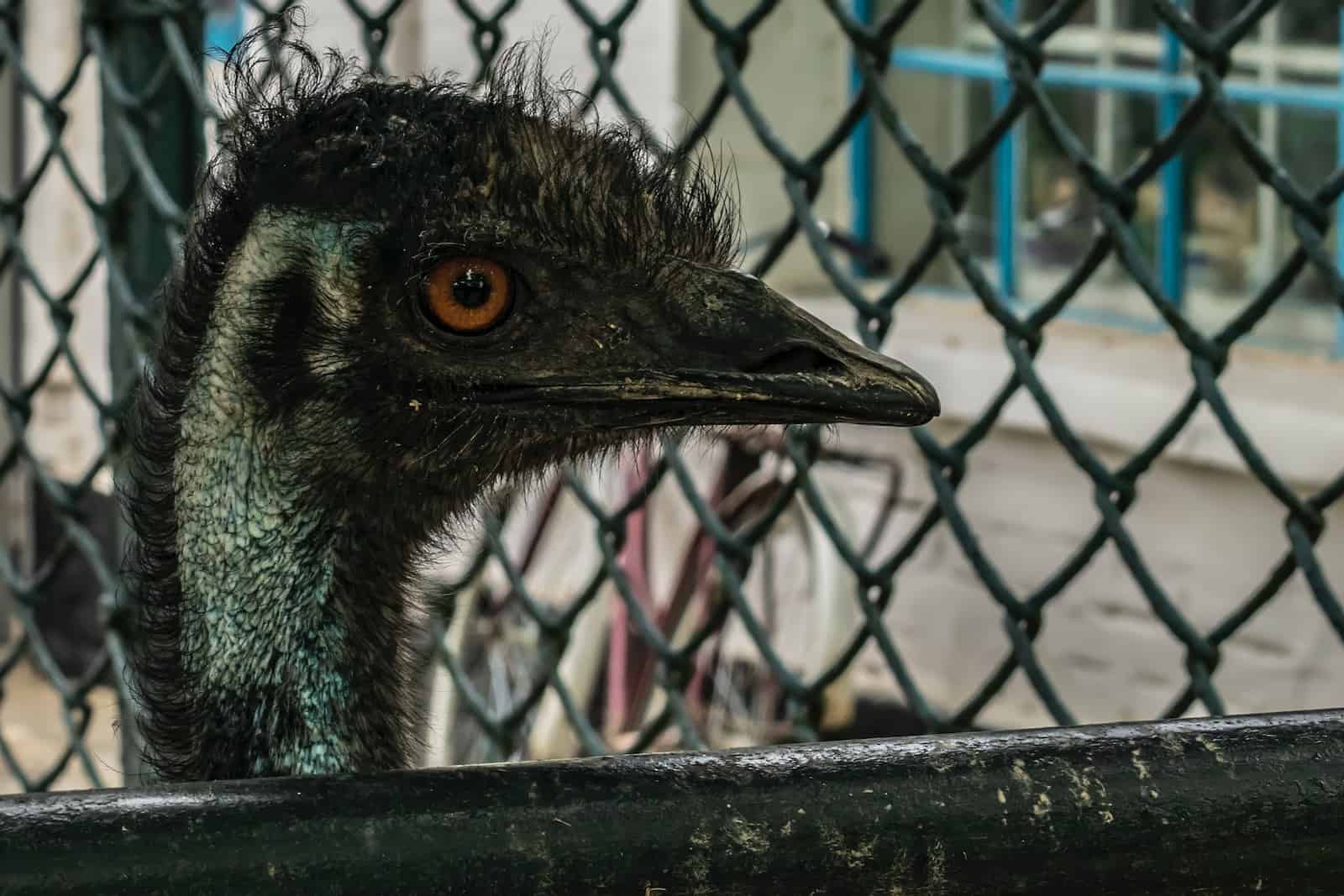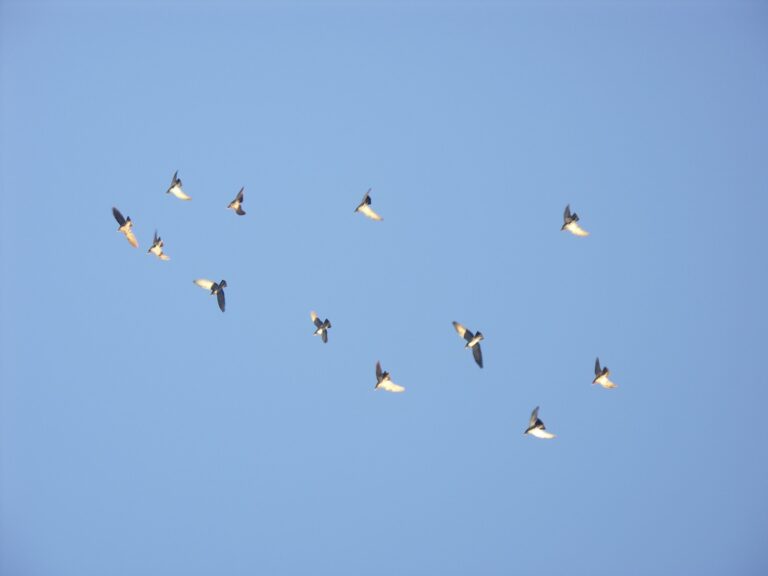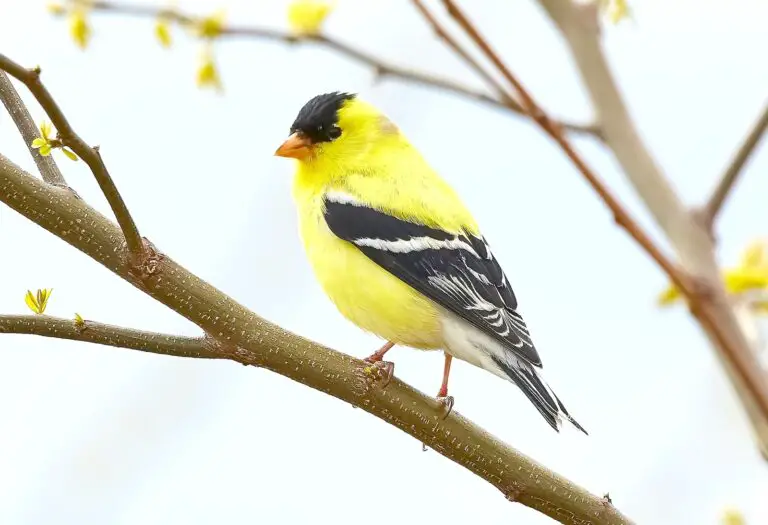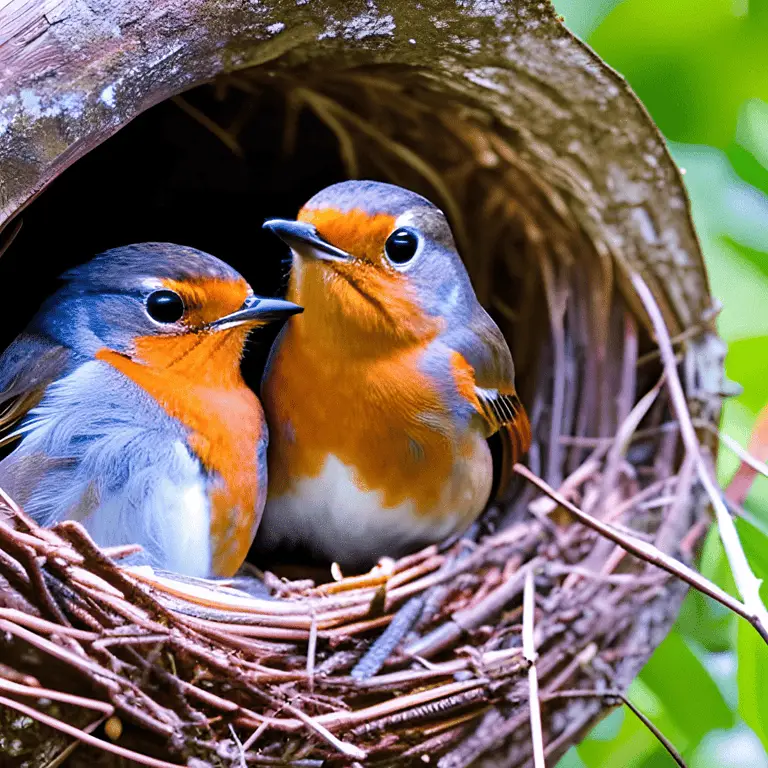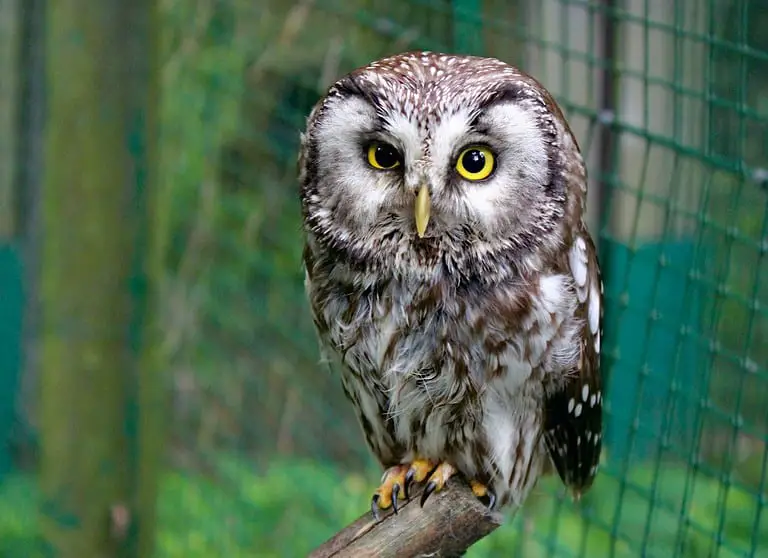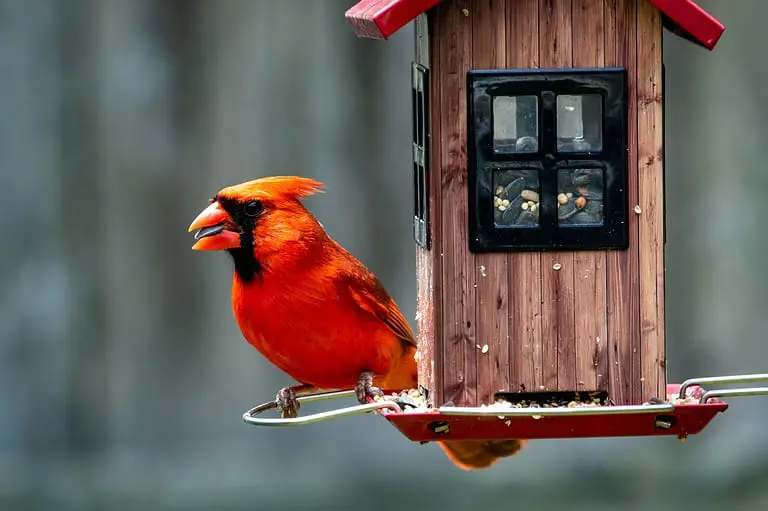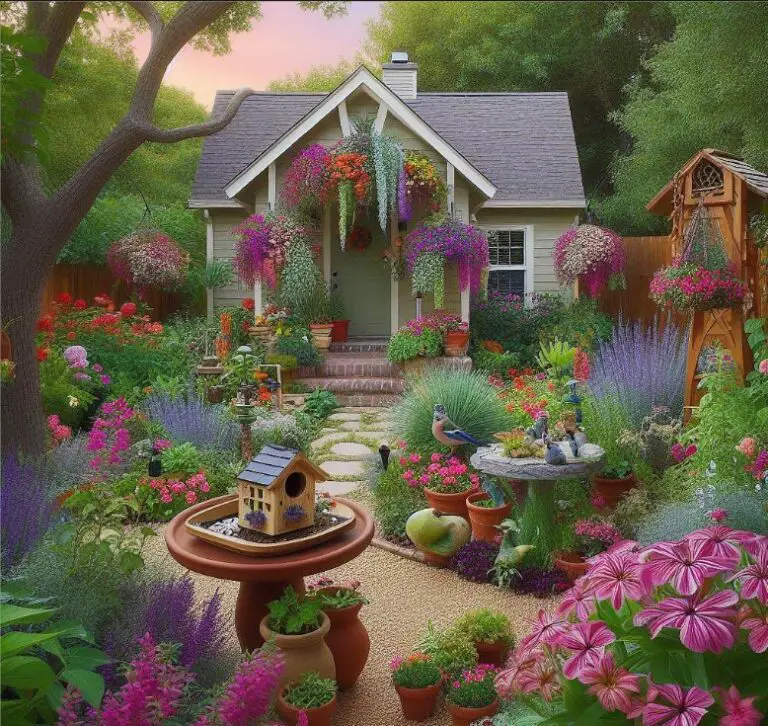Expert Guide to Setting Up Your Aviary – Step-By-Step Tutorial
Setting Up Your Aviary. Greetings, fellow bird enthusiasts! If you’re reading this guide, it means that you’re ready to take the plunge and create a beautiful and functional aviary that will provide a safe and enriching habitat for your feathered friends. Congratulations – you’re on the path to becoming a bird paradise creator!
As an experienced aviary designer and builder, I understand that setting up an aviary can seem like a daunting task at first. But fear not! With the right guidance and know-how, you can create a stunning aviary that both you and your birds will love.
In this comprehensive guide, I’m going to walk you through each step of the process, from planning and construction to design and maintenance. By the end, you’ll have all the information and inspiration you need to create the aviary of your dreams. Let’s get started!

Key Takeaways
- Setting up an aviary requires careful planning, construction, and ongoing maintenance.
- Aviary setup includes choosing the right location, determining the size and layout, and selecting the necessary equipment for your bird’s comfort and safety.
- Construction involves choosing the right materials, building the framework, and installing the necessary features to create a secure and comfortable habitat.
- Designing your aviary involves adding engaging elements such as perches, swings, and toys, as well as natural elements to mimic your bird’s natural habitat.
- Maintenance tasks include regular cleaning, inspections, and addressing common issues to create an optimal living environment for your feathered friends.
Planning Your Aviary – Essential Considerations
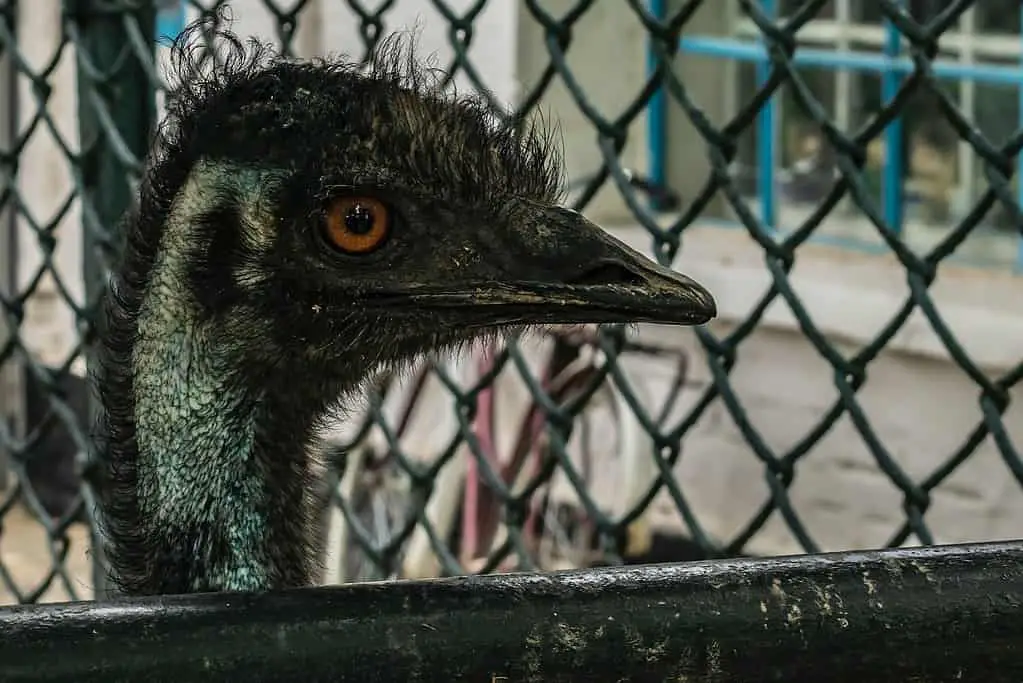
Welcome back! In this section, I’ll walk you through the essential considerations when planning your aviary. Creating a comfortable and safe bird habitat is all about proper planning and execution. Let’s dive in!
Determining the Location
The first step in planning your aviary is choosing the right location. Pick a spot that’s free from potential hazards, like trees with overhanging branches, power lines, and other structures. Ensure that it’s easy to access and that you have enough space for your desired size and layout. Keep in mind that the location should also provide adequate sunlight and shade to cater to your bird’s environmental needs.
Determining the Size and Layout
The size and layout of your aviary will depend on the type and number of birds you plan on keeping. A general rule of thumb is to provide at least 80 cubic feet of space per bird. This number can vary depending on the species, so do your research before deciding. When it comes to layout, think about incorporating natural elements like trees, bushes, or rocks that birds can perch on or use for shelter. Ensure that there is enough space for bird movement, including flight and hopping.
Choosing the Right Aviary Equipment
Having the right equipment in your aviary is essential to ensure the comfort and safety of your birds. Some essential pieces of equipment include bird feeders, water dishes, perches of varying sizes, and swings. You’ll also need to choose an appropriate substrate for your aviary – typically sand or grass. In terms of safety equipment, consider installing predator-proof netting or a roof to protect your birds from potential attacks.
Bird Enclosure Design and Bird Sanctuary
Lastly, think about designing your aviary as a bird sanctuary. A bird sanctuary is a place that caters to the needs of different species of birds and offers a haven for them. Think about incorporating bird-friendly plants and natural elements like natural perches or rocks in your aviary. This will not only enhance the appeal of your bird sanctuary but also create an environment that promotes the well-being of your feathered friends.
Overall, proper planning is crucial when creating an aviary. Determining the location, size, and layout, along with the right equipment and design elements, will ensure that your aviary is a comfortable and safe home for your birds to thrive in.
Aviary Construction – Building a Sturdy Habitat

Building an aviary for your birds is an exciting project, but it requires careful planning and execution to ensure a safe and comfortable habitat. Whether you’re creating a bird sanctuary setup or a bird habitat creation, the construction process is critical to the success of your aviary. Here are some essential steps to follow when installing your bird aviary.
Choose the Right Materials
The materials you use for your aviary can impact the durability, safety, and appearance of your bird sanctuary setup. When selecting materials for your aviary, consider factors such as the size, weather conditions, and predator risks in your area. Common options include:
- Wood: A popular choice due to its natural appearance, but it may require treatment to withstand weather and pest damage
- Metal: Durable and secure, but can be hot in the sun and may rust over time
- PVC: Lightweight and easy to clean, but may not be as sturdy as other materials
Build the Framework
The framework of your aviary is the foundation for your bird sanctuary setup. It should be strong enough to withstand the elements and protect your birds from predators. Here are some tips to consider when building the framework:
- Ensure the structure is level and secure
- Use sturdy screws, bolts, or nails to join materials together
- Install a solid roof to provide shade and protection from rain and snow
Install Necessary Features
The features you install in your aviary can make a significant difference in the comfort and health of your birds. Here are some features to consider when installing your bird aviary:
- Perches and platforms for birds to rest and fly
- Nesting boxes for breeding birds
- Fountains or shallow pools for birds to drink and bathe
- Ample feeding stations to avoid competition among birds
Create a Secure and Comfortable Habitat
To ensure your bird sanctuary setup is safe and comfortable for your feathered friends, consider the following measures:
- Wire mesh or netting to keep predators out
- Proper ventilation to maintain fresh air flow and prevent heat buildup in the summer months
- Environmental control systems for temperature and humidity regulation
Refer to an Aviary Construction Guide
An aviary construction guide can provide you with detailed instructions and tips to ensure a successful bird habitat creation. Consider consulting a guide before starting your project to ensure that you have a comprehensive understanding of the process.
By following these essential steps and implementing the necessary features, you can create a secure and comfortable habitat for your birds that will provide them with a safe and healthy environment to thrive in. With an optimal bird aviary installation, you can enjoy the beauty and companionship of your feathered friends for years to come.
Aviary Design – Creating an Enriching Environment
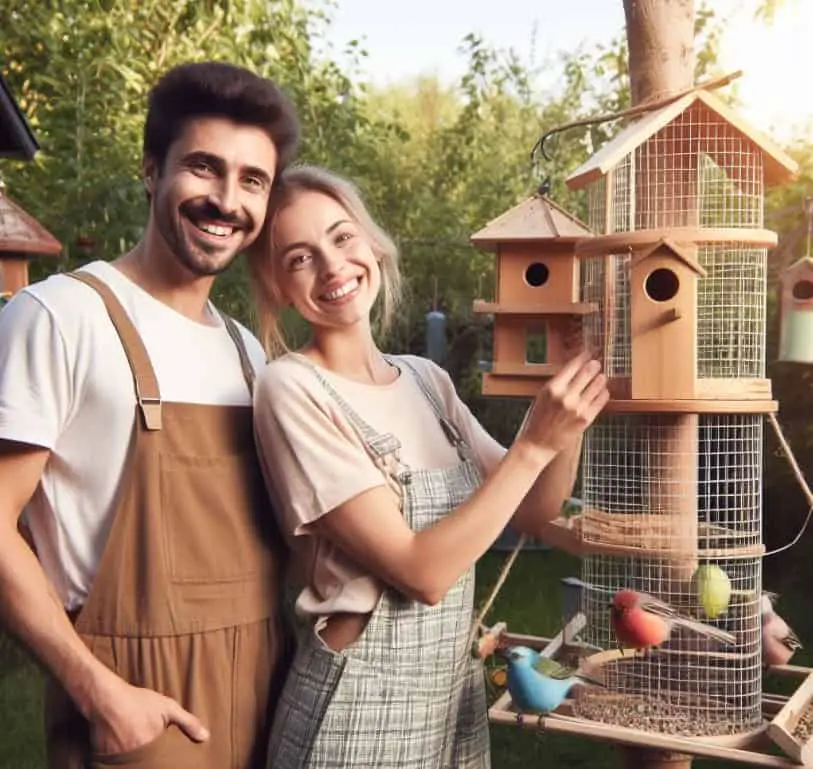
Designing your aviary is an exciting opportunity to create an enriching environment for your birds. Incorporating different elements both natural and man-made can offer stimulation, comfort, and security to your feathered friends. Here are some aviary setup tips and aviary design ideas to make your bird’s habitat an engaging haven.
Perches, Swings, and Toys
A well-designed aviary should have plenty of perches, swings, and toys to keep your birds entertained. Offer your feathered friends a variety of different textures, shapes, and sizes to challenge their minds and keep them active. Consider using natural branches and wood that can be safely chewed and provide a diverse range of perching surfaces. Similarly, swings can provide stimulation and exercise, and toys such as bells, mirrors, and balls can engage your birds’ natural curiosity.
Natural Elements
Creating an environment that incorporates natural elements can make your aviary feel like a lush habitat. Plants, trees, and shrubs can provide shade, shelter, and a sense of natural beauty. Depending on the types of birds you have, you may want to consider planting bird-friendly species such as berries, seeds, and fruits. Additionally, providing natural substrates such as sand, soil, and gravel can help simulate a more natural setting for your birds.
The Right Lighting
Lighting is an essential aspect of aviary design. The right lighting can help regulate your bird’s circadian rhythm and help maintain their natural behaviors. Bright light can stimulate activity and promote breeding, while dimmer light can help your birds rest and sleep. Full-spectrum lighting can mimic natural sunlight and provide your birds with essential vitamin D.
Airy and Spacious Design
Creating a spacious and airy design can help reduce stress and promote healthy behavior in your birds. Ensure there is plenty of room for your birds to fly and move around freely. Design your aviary with plenty of windows or openings to promote air circulation and prevent stagnant air. This can help reduce moisture and prevent respiratory problems, which can be deadly for birds.
Aviary Essentials
When designing your aviary, it’s essential to consider the necessary aviary equipment and supplies. These include feeders, waterers, and temperature control systems that can help regulate the environment and promote the health of your feathered friends.
By incorporating these aviary design ideas and aviary setup tips, you can create a safe and enriching habitat for your birds that provides them with the comfort, stimulation, and security they need to thrive.
Aviary Maintenance – Keeping Your Habitat Clean and Healthy
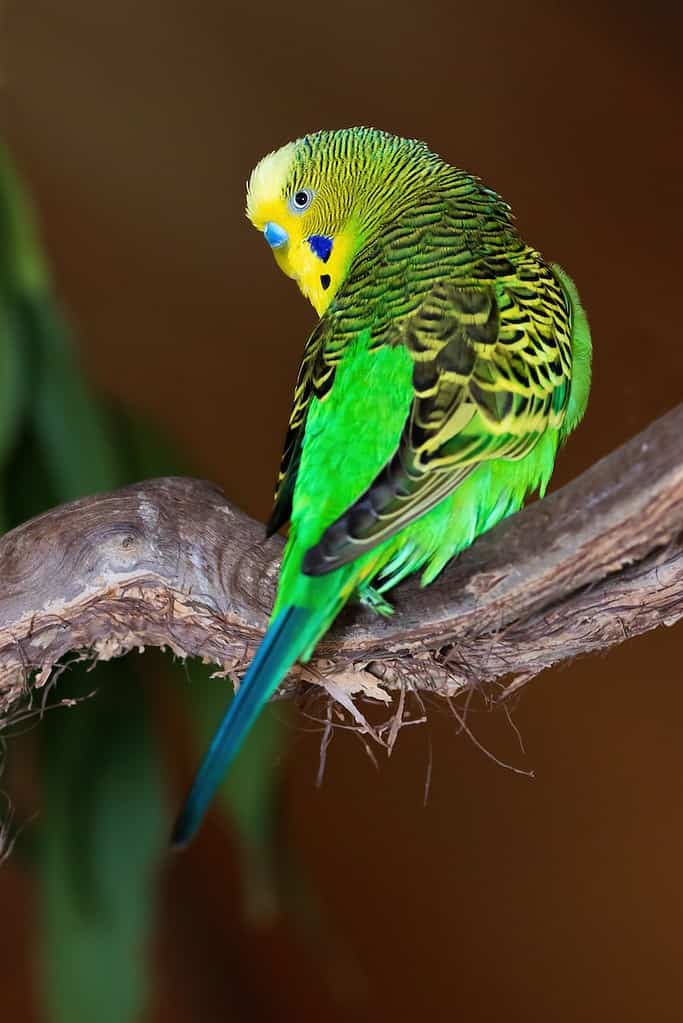
Maintaining your aviary can seem overwhelming, but it’s essential to ensure the health and happiness of your birds. Regular and thorough maintenance can prevent the spread of disease and keep your aviary looking beautiful. Here are some aviary maintenance tips to help keep your habitat clean and healthy:
Aviary Setup Checklist
Creating an aviary setup checklist is an effective way to ensure you have all the necessary equipment on hand. Here are some items to include:
- Perches and swings
- Nesting boxes
- Food and water dishes
- Toys for stimulation
- Cleaning supplies (scrub brush, disinfectant, broom, dustpan)
- First aid kit
Aviary Equipment List
The right equipment can make a significant difference in maintaining a clean and healthy aviary. Here are some essential items:
| Equipment | Purpose |
|---|---|
| Air purifier | Reduce airborne contaminants |
| HEPA filter | Trap airborne particles and allergens |
| UV light | Kill bacteria and viruses |
| Cleaning supplies | Remove waste and disinfect surfaces |
| First aid kit | Treat minor injuries and illnesses |
Aviary Maintenance Tips
Regular maintenance is crucial to prevent the buildup of waste and other potential hazards in your aviary. Here are some essential tips to keep your habitat clean:
- Clean food and water dishes daily
- Replace bedding frequently
- Sweep the floor and remove debris regularly
- Disinfect surfaces and perches weekly
- Inspect your birds daily for signs of illness or injury
By following these aviary maintenance tips and staying on top of your daily, weekly, and monthly tasks, you can create a clean and healthy environment for your feathered friends to thrive.
Bird Breeding – Creating a Suitable Environment for Nesting
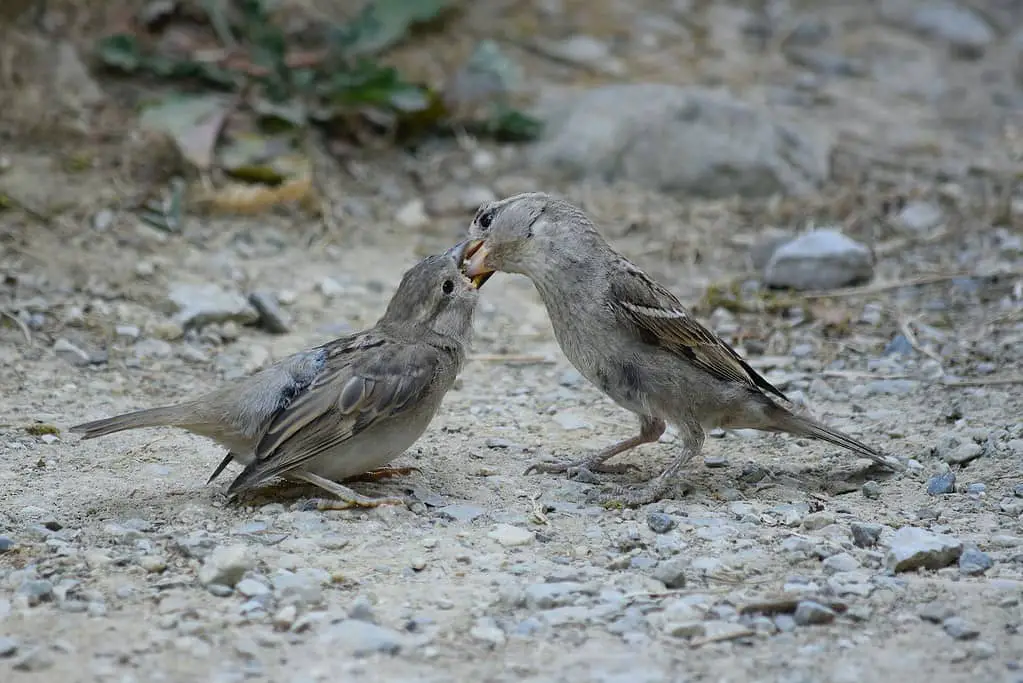
Creating an ideal environment for bird breeding in your aviary can be both exciting and rewarding. Whether you’re breeding birds for show or want to expand your aviary, it’s important to provide a safe and comfortable space for your birds to breed.
Choosing the Right Birdhouse Setup
The first step in creating the right environment for bird breeding is to choose the right birdhouse setup. The size and design of the birdhouse will depend on the type of birds you wish to breed. It’s important to provide enough space for the birds to move around and fly inside the birdhouse. You may also want to provide nesting boxes to allow the birds to create a comfortable space to lay their eggs.
Bird Enclosure Construction
When constructing a bird enclosure for breeding, ensure that it provides enough space to accommodate the number of birds you wish to breed. Also, make sure to incorporate all the essential features, such as nesting boxes, perches, and fresh food and water sources.
Providing Privacy for Your Birds
Privacy is critical for bird breeding as they need a quiet and undisturbed environment to mate and lay eggs. Therefore, it’s essential to create a separate space within the aviary where the birds can breed in peace. You may want to use screens or curtains to provide some privacy or construct a separate enclosure altogether.
Ensuring Appropriate Temperature and Lighting Conditions
Temperature and lighting are crucial factors that can impact the success of bird breeding. Most bird species require specific temperature and lighting conditions to breed successfully. In general, it’s best to maintain a warm and well-lit environment inside the birdhouse. You may also want to provide heating lamps or UV lighting to encourage breeding.
Regular Cleaning and Maintenance
Regular cleaning and maintenance of your birdhouse are essential to prevent disease and ensure the health of your breeding birds. Make sure to clean the birdhouse and nesting boxes regularly to prevent bacteria buildup. Also, monitor the birds’ behavior and appearance to identify any signs of illness or stress early on.
By following these tips for bird breeding in your aviary, you can create a safe and comfortable space for your birds to breed and thrive.
Aviary Management – Establishing Rules and Routines
As a responsible aviary owner, I know that managing an aviary requires establishing rules and routines to ensure the safety and well-being of your birds. In this section, I’m going to share some important considerations regarding bird housing, constructing an aviary, tips for setting up an aviary, and bird sanctuary setup.
Fitness and Health Check
Before setting up an aviary, it is essential to conduct a fitness and health check-up on your birds. This helps to detect any underlying health issues that could spread to other birds in the aviary. It is preferable to work with an experienced avian veterinarian to conduct the check-up to ensure that it is comprehensive and accurate.
Feeding Schedules
Establishing a feeding schedule is crucial to ensure that your birds are properly nourished. The feeding schedule should be consistent and tailored to the specific needs of each bird species. I recommend investing in a high-quality commercial bird food that contains a balance of nutrients. Additionally, supplement their diet with fresh fruits and vegetables.
Cleaning Routines
Regular cleaning of the aviary is essential to maintain a clean and healthy environment for your birds. Establishing a cleaning routine that includes daily, weekly, and monthly tasks will ensure that the aviary remains hygienic and free from potential hazards. Remove food debris, feathers, and droppings from the aviary and clean the feeders and water dishes daily. Replace soiled substrates and bedding weekly, and conduct a deep cleaning of the aviary and its contents monthly.
Handling and Interaction Guidelines
Establishing guidelines for handling and interacting with your birds is critical to ensure their safety and well-being. Train yourself and others on proper handling techniques to avoid injuring the birds or causing undue stress. Additionally, establish rules for visitors to the aviary to minimize the spread of diseases and potential hazards.
Implementing Protocols
It is crucial to have protocols in place for dealing with potential health emergencies or aviary accidents. Establish an emergency contact list of avian veterinarians and other professionals who can assist in case of an emergency. Additionally, have a first-aid kit and a well-stocked aviary supply inventory on hand.
By following these management guidelines, you can establish a routine that ensures the safety, health, and happiness of your feathered friends. With proper management, you can enjoy the company of your birds and create a bird paradise that you and your feathered friends can enjoy for years to come.
Creating a Safe Environment – Protecting Your Birds
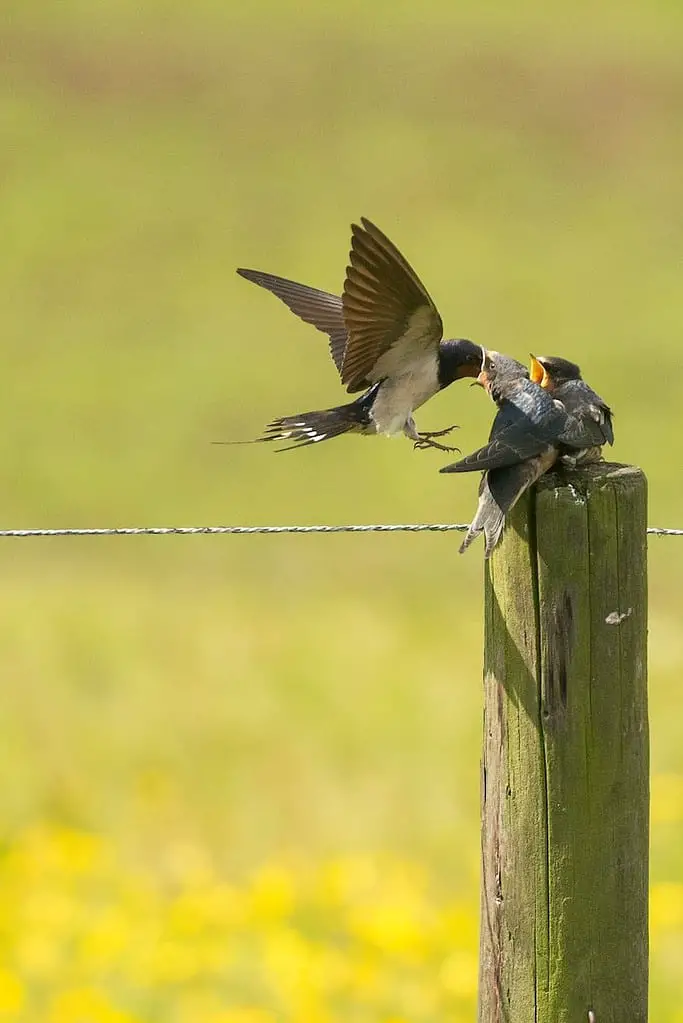
It’s important to ensure that your birds are safe and secure in their aviary. By implementing the best practices for aviary setup, you can protect your feathered friends from potential hazards and ensure their long-term health and happiness. Here are some essential tips for creating a safe environment:
Predator-Proofing Measures
One of the most critical steps in protecting your birds is to predator-proof the aviary. This means preventing predators such as raccoons, snakes, and birds of prey from entering the aviary and harming your birds. Some predator-proofing measures include:
- Adding a roof or canopy to the aviary
- Securing all access points, including doors and windows
- Installing a mesh fence around the perimeter of the aviary
- Using a predator-proof mesh material for the walls and roof of the aviary
Proper Ventilation
Adequate ventilation is essential to prevent the buildup of harmful gases such as ammonia, which can lead to respiratory issues in birds. To ensure proper ventilation, consider incorporating windows, vents, or fans into the aviary design. This will help to circulate fresh air and maintain healthy air quality for your birds.
Minimizing Hazards
Inside the aviary, it’s crucial to minimize any potential hazards that could harm your birds. This includes removing any sharp or pointed objects, avoiding toxic plants or chemicals, and keeping the aviary clean and free from debris. Regular inspections and maintenance can help you identify and address any potential hazards before they become a problem.
Best Practices for Aviary Setup
To ensure the safety of your birds, it’s important to follow the best practices for aviary setup. This includes choosing the right location for the aviary, using high-quality materials, and designing the aviary with your birds’ needs in mind. By following these best practices, you can create a safe and secure environment for your feathered friends to thrive.
Conclusion
Protecting your birds is a top priority when setting up your aviary. By implementing predator-proofing measures, ensuring proper ventilation, minimizing hazards, and following the best practices for aviary setup, you can create a safe and healthy environment for your feathered friends. Remember to regularly inspect and maintain the aviary to address any potential issues and keep your birds happy and healthy.
Aviary Design and Construction – Combining Functionality and Aesthetics
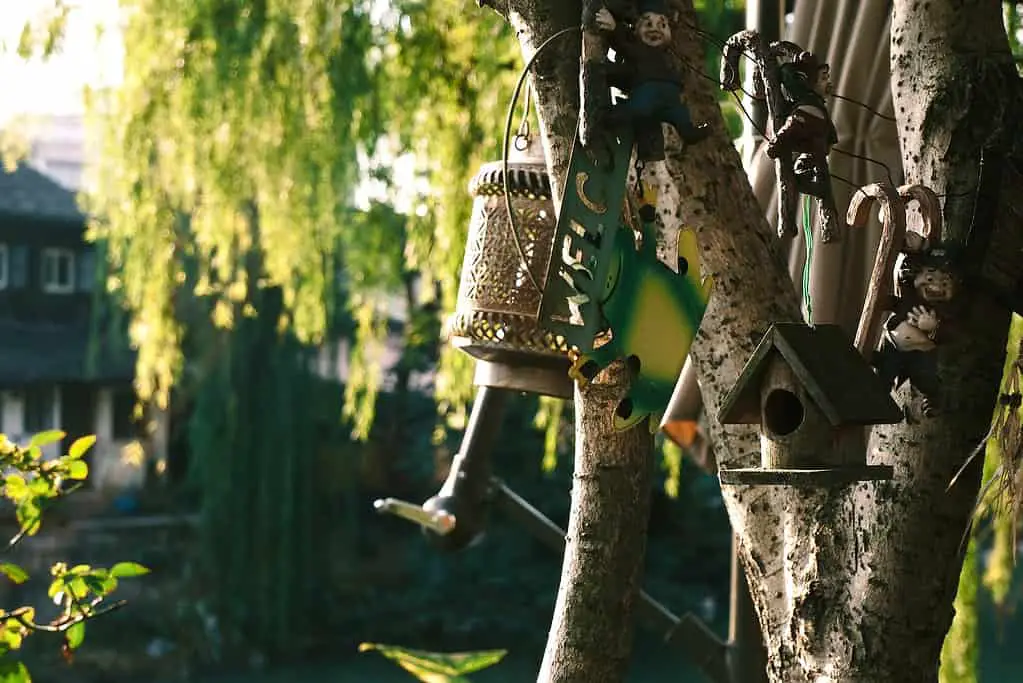
Creating an aviary that is both functional and visually appealing requires careful consideration of various factors. In this section, I will provide you with essential steps to ensure that your aviary meets the needs of your birds and enhances the beauty of your outdoor space.
Steps to Creating an Aviary
When constructing your aviary, there are several steps to keep in mind to ensure its functionality and aesthetics:
- Choose the right location – Find a spot that is sheltered from strong winds and direct sunlight, and has adequate drainage.
- Determine the size and shape – Consider the number of birds you plan to house and their size to determine the necessary dimensions of your aviary. Additionally, the shape should complement the surrounding landscape.
- Choose the right materials – Opt for durable materials that can withstand the elements and provide adequate insulation, such as wood, steel, and wire mesh.
- Create a framework – Use sturdy posts or poles to form the structural frame of your aviary.
- Add features – Incorporate elements such as perches, swings, and natural foliage to create an engaging and stimulating environment for your birds.
Aviary Construction Tips
When constructing your aviary, here are some additional tips to ensure its sturdiness and longevity:
- Ensure all materials are properly treated and sealed to prevent rotting and corrosion.
- Use galvanized screws and bolts for added durability.
- Make sure all corners and joints are securely fastened and reinforced.
- Provide adequate ventilation to prevent the buildup of harmful gases and maintain proper airflow.
- Consider adding a roof to protect your birds from the elements and potential predators.
Essentials for an Aviary
When designing your aviary, keep in mind the essential elements that contribute to the comfort and safety of your birds:
| Element | Description |
|---|---|
| Perches | Provide multiple perches of various sizes and materials to simulate a natural environment and prevent foot problems. |
| Nesting boxes | Provide nesting boxes to create a suitable environment for breeding and nesting. |
| Food and water sources | Ensure that your birds have access to clean food and water at all times. Place the food and water bowls away from perches to keep them clean. |
| Toys and enrichment | Provide toys and other enrichment activities to keep your birds mentally stimulated and prevent boredom. |
| Shelter and hiding spots | Provide shelter and hiding spots for your birds to retreat to when they feel stressed or threatened. |
By following these essential steps, tips, and incorporating the necessary elements, you can create a well-designed and functional aviary that meets the needs of your birds and enhances the beauty of your outdoor space.
Bird Aviary Setup – Essential Tips for Success
If you’re considering setting up an aviary for your feathered friends, it’s important to understand the essential steps to create an ideal environment for them to thrive. Here are some practical tips to ensure a successful bird aviary setup:
Step 1: Choosing the Right Location
The first step in setting up an aviary is choosing the right location. Look for an area that provides ample shade, protection from the wind and direct sunlight, and is away from any potential hazards such as predators or toxic plants.
Step 2: Determining the Size and Design
The size and design of your aviary depend on the number of birds you plan to keep and their specific needs. Make sure the enclosure provides adequate space for your birds to move around freely and fly. It should also have proper perches, nesting boxes, and feeding stations.
Step 3: Providing the Right Environmental Conditions
The right environmental conditions are crucial to the health and well-being of your birds. Make sure the aviary has proper ventilation, temperature control, and lighting to ensure their comfort and safety.
Step 4: Choosing the Right Equipment and Supplies
Invest in quality aviary equipment and supplies such as feeders, birdhouses, water dispensers, and cleaning tools to ensure proper maintenance and well-being of your birds.
Step 5: Regular Maintenance
Maintaining your aviary should be a regular routine to ensure the health and happiness of your birds. Regular cleaning, disinfecting, and grooming are essential tasks to keep your birds healthy and safe.
In Conclusion
Setting up an aviary can be a challenging task, but with these essential tips, you’ll be on your way to creating an ideal environment for your feathered friends. Remember to choose the right location, determine the size and design, provide the right environmental conditions, invest in quality equipment and supplies, and maintain your aviary regularly, and you’ll have a happy and healthy flock of birds.
DIY Aviary Guide – Building Your Aviary from Scratch
Building your own aviary can be a fulfilling and cost-effective way to provide a safe and comfortable home for your feathered friends. With the right guidance and supplies, constructing an aviary from scratch is an achievable project that anyone can undertake. In this section, I’ll provide you with expert tips and step-by-step guidance to ensure a successful aviary setup, from choosing the right materials to providing the appropriate environment for your birds.
Choosing the Right Aviary Design
When selecting an aviary design, it’s important to consider the size and number of birds you plan to house, the available space in your yard, and your budget. There are a variety of designs to choose from, including flight cages, walk-in aviaries, and custom-built options. Do your research and choose a design that meets your specific needs and preferences.
Gathering Essential Supplies
Before starting the construction process, it’s crucial to gather all the necessary supplies. This includes aviary wire or mesh, lumber or PVC piping for the frame, roofing materials, and hardware such as screws and hinges. You’ll also need tools such as a saw, drill, and wire cutters. Make a detailed list of all the required supplies and purchase them in advance to avoid delays.
Aviary Installation
The installation process involves building the frame, covering it with wire or mesh, and adding doors and other features for access and maintenance. It’s important to follow the aviary design plan closely and ensure that the structure is secure and stable. Take your time during this process and seek assistance if needed.
Essential Supplies for an Aviary
| Supply | Description |
|---|---|
| Food and water dishes | Stainless steel or ceramic dishes that are easy to clean and replace. |
| Perches and swings | Natural wood perches and swings provide exercise and mental stimulation for birds. |
| Nesting boxes | Nesting boxes provide a safe and comfortable place for birds to lay their eggs and raise their young. |
| Toys and enrichment | Provide a variety of toys and enrichment items to keep your birds entertained and engaged. |
Maintenance of Your Aviary
Maintaining your aviary is essential to ensure the long-term health and happiness of your birds. Regular tasks include cleaning food and water dishes, replacing bedding, and removing any debris or waste. It’s also important to inspect the aviary regularly for signs of wear and tear and to address any issues promptly.
Building your own aviary requires time, effort, and patience, but the rewards of providing a safe and enriching environment for your birds are immeasurable. By following this DIY guide, you’ll be well on your way to creating a beautiful and functional aviary that both you and your feathered friends will enjoy for years to come.
Maintenance of Your Aviary – Ensuring Long-Term Health and Happiness
Maintaining your aviary is crucial to create a safe and healthy environment for your birds. By developing a routine maintenance schedule, you can ensure that your feathered friends stay happy and healthy for years to come.
Inspections and Cleaning
Regular inspections and cleaning are the foundation of proper aviary maintenance. Inspect the aviary at least once a week to ensure that all equipment is functioning correctly, and there are no signs of damage or wear. Thoroughly clean the aviary at least once a month, removing all debris and disinfecting all surfaces. Replace any damaged or worn equipment to ensure the safety and comfort of your birds.
Tip: Make sure to wear gloves and a mask when handling or cleaning the aviary to protect yourself and your birds from potential harm.
Feeding and Watering
Provide fresh food and water to your birds every day, and ensure that all feeding and watering equipment is clean and functioning correctly. Remove any leftover food to prevent spoilage and bacterial growth.
Environmental Control
The temperature, humidity, and lighting conditions in your aviary can affect the health and well-being of your birds. Monitor the temperature and humidity levels regularly and adjust the heating or cooling systems as needed. Ensure that the lighting conditions mimic natural daylight to regulate your bird’s natural cycles.
Preventing Hazards
Minimize potential hazards both inside and outside the aviary to keep your birds safe. Remove any toxic plants or substances from the surrounding area, and ensure that the aviary is predator-proof to prevent attacks from other animals.
Record Keeping
Keep a record of all maintenance tasks, including inspections, cleanings, and equipment replacements. This record will help you track your progress and ensure that you are providing the best possible care for your birds.
Maintaining your aviary requires commitment and dedication, but the rewards of providing a safe and healthy environment for your birds are priceless. By following these maintenance tips, you can ensure that your aviary remains a haven of happiness for your feathered friends.
Creating a Bird Sanctuary – Providing a Haven for Wildlife
Creating a bird sanctuary within your aviary can be a wonderful way to provide a safe haven for not just your own birds but also for wildlife in your area. The following are some tips and ideas to help you get started:
- Research local bird species and their habitats: Understanding the types of birds in your area and their specific habitat needs can help you create an environment that is both welcoming and suitable for a variety of species.
- Provide a food and water source: Installing bird feeders and watering stations can attract native bird species to your aviary, providing them with additional sources of nourishment.
- Incorporate natural elements: Adding plants, trees, and other natural elements to your aviary can help create a more natural and appealing environment for wildlife.
- Create nesting areas: Providing nesting boxes and other nesting materials can attract birds looking for a place to lay their eggs and raise their young.
By creating a bird sanctuary in your aviary, you can not only provide a safe and enriching environment for your own birds but also contribute to the conservation of your local wildlife.
Conclusion
As you can see, setting up an aviary can be a fulfilling and exciting venture. By following the steps outlined in this guide, you can create a beautiful and functional habitat for your feathered friends that not only meets their basic needs but also provides enrichment and stimulation.
Remember Your Purpose
While the construction and design of your aviary may be the first steps, it’s essential to remember your purpose. Whether it’s providing a sanctuary for your birds or creating an environment for breeding, your aviary should put the birds’ needs first.
Commitment is Key
Maintaining your aviary requires commitment and regular upkeep. But the rewards of providing a safe and healthy environment for your birds are immeasurable. Watching your birds thrive and enjoy their new habitat is a satisfying and rewarding experience.
Enjoy the Process
Lastly, enjoy the process of creating your aviary. It’s a chance to exercise your creativity and express your love for nature and animals. While there may be challenges along the way, don’t forget to take the time to appreciate the beauty and wonder of your feathered friends and their new home.
So go ahead and get started on your aviary setup. With this guide, you have all the tools you need to create a bird paradise that will provide joy and satisfaction for years to come. Happy birding!
FAQ
What are the essential considerations for planning my aviary?
When planning your aviary, it’s important to choose the right location, determine the size and layout, and select the necessary equipment for your bird’s comfort and safety.
How do I construct a sturdy aviary?
To build a sturdy aviary, you’ll need to choose the right materials, build a strong framework, and install necessary features to create a secure and comfortable habitat for your birds.
What design tips can I use to create an engaging aviary?
You can create an engaging aviary by incorporating perches, swings, toys, and natural elements that mimic your bird’s natural habitat, providing them with enrichment and stimulation.
How do I maintain my aviary and keep it clean and healthy?
Regular maintenance is crucial to keep your aviary clean, hygienic, and free from potential hazards. We’ll provide you with a maintenance checklist and essential tips for effective aviary maintenance.
What do I need to consider for bird breeding in my aviary?
If you want to breed birds in your aviary, you’ll need to create a suitable environment for nesting by providing nesting boxes, privacy, and appropriate temperature and lighting conditions.
How can I manage my aviary effectively?
Managing your aviary effectively involves establishing rules and routines for feeding schedules, cleaning routines, and implementing protocols for handling and interacting with your birds.
How can I create a safe environment for my birds in the aviary?
Ensuring the safety of your birds in the aviary requires predator-proofing measures, proper ventilation, and minimizing potential hazards both inside and outside the aviary.
How do I combine functionality and aesthetics in my aviary design and construction?
Striking a balance between functionality and aesthetics in your aviary design involves following essential steps to create a well-designed habitat that meets the needs of your birds and adds beauty to your outdoor space.
What are some essential tips for a successful bird aviary setup?
A successful bird aviary setup requires careful planning, choosing the right materials, and providing suitable environmental conditions for your birds. We’ll provide you with essential tips and step-by-step guidance.
Can I build my aviary from scratch with a DIY approach?
Absolutely! If you’re up for a do-it-yourself project, we’ll guide you through the process of building your aviary from scratch, offering practical tips, advice, and guidance on design, supplies, and construction.
How do I maintain my aviary for long-term health and happiness of my birds?
Maintaining your aviary is an ongoing commitment that involves essential maintenance tasks, regular inspections, and addressing common issues to create an optimal living environment for your feathered friends.
Can I create a bird sanctuary within my aviary?
Absolutely! Your aviary can also serve as a bird sanctuary by attracting native species, providing food and water sources, and creating a welcoming environment for birds to thrive alongside your own feathered friends.

